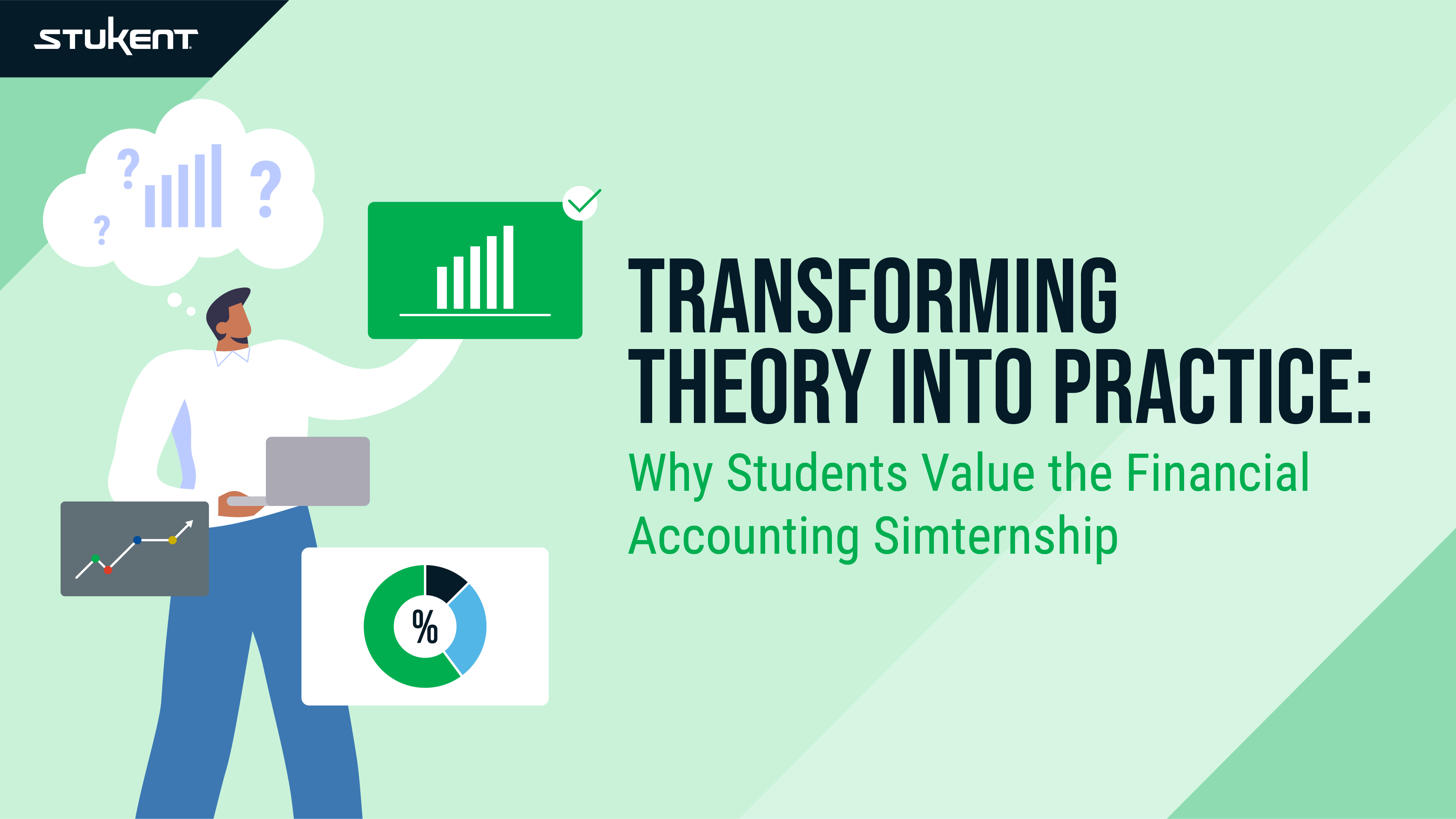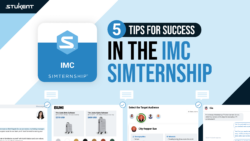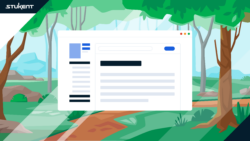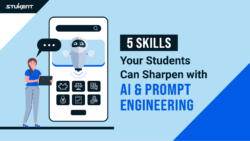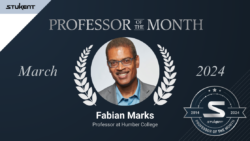For some graduates, the leap from classroom to career can feel like jumping from one moving train to another.
That’s why many students value Simternships™, simulations that immerse them in the same roles and tasks they would do in an internship or first job. These tools are designed to bridge the gap between theoretical knowledge and practical application. They also help educators reduce their class prep time and provide an engaging experience for their students.
The Stukent® Financial Accounting Simternship is a powerful tool to bring real-world application to your course. Read on to see why students value this experience.
Application of Theory to Real-World Scenarios
The Financial Accounting Bundle comes with two scenarios: one that helps students grasp the accounting cycle and one that focuses on the importance of financial statements.
Scenario One: Financial Statements
The Financial Statements scenario is set at “Carly’s,” a simulated home goods retailer with five locations. Students step into the role of a staff accountant, reporting to the CFO and working on benchmarks to assess the company’s performance. This scenario focuses on the role of financial statements in business decision-making.
Scenario Two: The Accounting Cycle
The Accounting Cycle scenario transports students to the picturesque Kaanapali Beach in Maui, where they embark on an entrepreneurial journey to earn money for college. Students are tasked with running a beachside business, which entails selling sunglasses and suntan lotion and renting paddle boards and body boards.
“One of my favorite tasks was having the opportunity to create a business where I interacted with peers, managers, and students,” shared Melanie Apraez, a student at Texas State University who has used the Simternship. “Working on a project that seemed real … I enjoyed having the opportunity to be in the role of creating a company and how it could be successful.”
The emphasis is on how students account for business decisions by making journal entries, preparing financial reports, and ultimately giving a presentation to the bank for additional funding. This hands-on experience not only reinforces students’ grasp of accounting principles but also hones their decision-making and presentation skills.
“I learned the general things about a company,” Melanie said. “How balance sheets work, how they are created, when the company makes the adjusting and closing entries. I was surprised by how real it was in professional terms when achieving a goal.”
Interactive Elements
The Simternship’s interactive structure is a game-changer. Students receive guidance and feedback from a virtual business partner, complete tasks listed in a scenario-specific video introduction, and respond to questions from peers in the Notifications Hub.
This immersive approach keeps students engaged and invested in their learning journey. Some key components of the rounds include:
- Video Introductions: Each round begins with a video overview from the student’s business partner, setting the stage for the tasks ahead.
- Inbox: Students receive memos from their business partner that contain additional information and guidance for completing each round. These memos accumulate in the Inbox, allowing students to review them as needed.
- Notifications Hub: This hub presents messages and questions from peers and inexperienced entrepreneurs, encouraging students to respond and engage with the material. This interaction helps reinforce accounting concepts and fosters a deeper understanding of the subject matter.
- Tasks: Students receive a list of tasks for each round, with instructions and fields for completing the work. These tasks are directly related to the scenario and help students practice and apply their knowledge in a structured manner.
- Resources: If material from previous rounds is needed, it becomes available to students via the Resources button. This ensures that students can access all necessary information as they progress through the Simternship.
- Results: After submitting their work, students can view the results of their tasks (excluding the Notifications Hub) and revisit them at any time for further review and reflection.
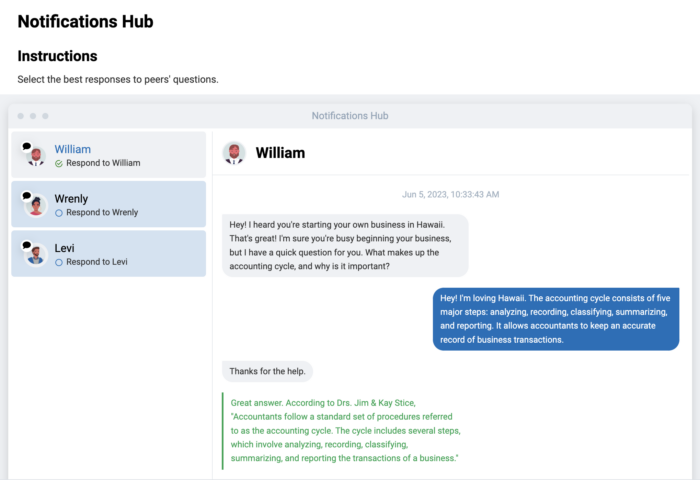
“My favorite tasks were running and reporting the sales reports at the end of the month and responding to the questions in the Notifications Hub because that gave me an opportunity to think about questions I hadn’t before,” shared Isabel Duntly, another student from Texas State University.
The Simternship’s user interface also mimics industry-standard tools like QuickBooks, providing students with valuable experience using accounting software. This familiarity with professional tools is crucial for students transitioning from the classroom to the workplace. They gain a deeper comprehension of financial principles by analyzing transactions and understanding their impact on the accounting equation.
“I enjoyed that the Simternship was challenging but repetitive so I could keep practicing the same topics and get the information stuck in my brain,” Isabel added. Her advice to future participants is to “take your time and look back at your past work for assistance.”
The Accompanying Courseware: A Foundation for Success in the Simternship
The Financial Accounting Simternship is great for experiential learning and merges perfectly with the accompanying courseware, “Introduction to Financial Accounting.” Coauthored by Dr. Kay Stice and Dr. Jim Stice, the courseware reinforces key concepts such as journal entries, adjusting entries, and closing entries, which are crucial for success in the Simternship and students’ future careers.
“It was easy to understand, and it was very practical compared to other textbooks,” said Melanie. “I liked how the audience can connect more easily and quickly with this introduction.”
Video Homework: A Visual Learning Experience
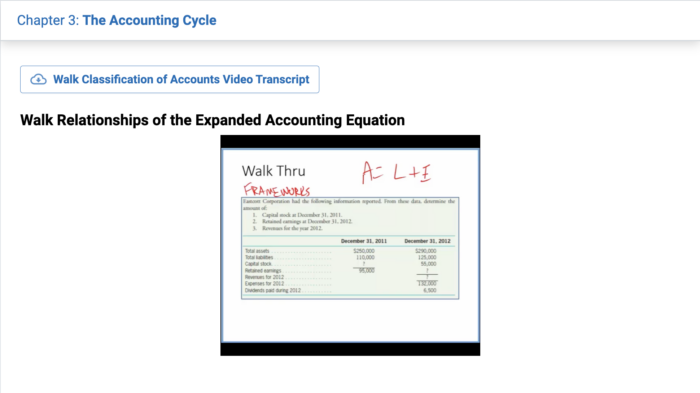
One of the standout features of the courseware is the video homework. These videos are divided into “Walk Thrus” and “Work Thrus” that give students a step-by-step guide to solving accounting problems.
In Walk Thrus, the authors break down an example, walking students through a problem. Work Thrus take this a step further by allowing students to pause the video, complete the exercise on their own, and then review the solution. This interactive approach caters to different learning styles and ensures that students have a clear understanding of the material.
Structured Learning Path
The courseware also provides a detailed schedule that outlines exactly what students need to do before each class. This includes studying specific sections of the courseware and completing assigned homework problems. This structured approach ensures students come to class prepared and ready to engage in group assignments and discussions. The courseware sets students up for a productive and rewarding learning experience by providing clear expectations and a roadmap for success.
The Financial Accounting Simternship, complemented by the “Introduction to Financial Accounting” courseware, equips students with the practical skills and theoretical knowledge needed to succeed in the accounting field. Through engaging scenarios, interactive elements, and a structured learning path, students can apply theory to real-world situations, enhancing their understanding of the accounting cycle and the importance of financial statements.
To learn about Stukent’s first-in-the-world Simternships and courseware and to get FREE instructor access to Stukent materials, visit our website.
